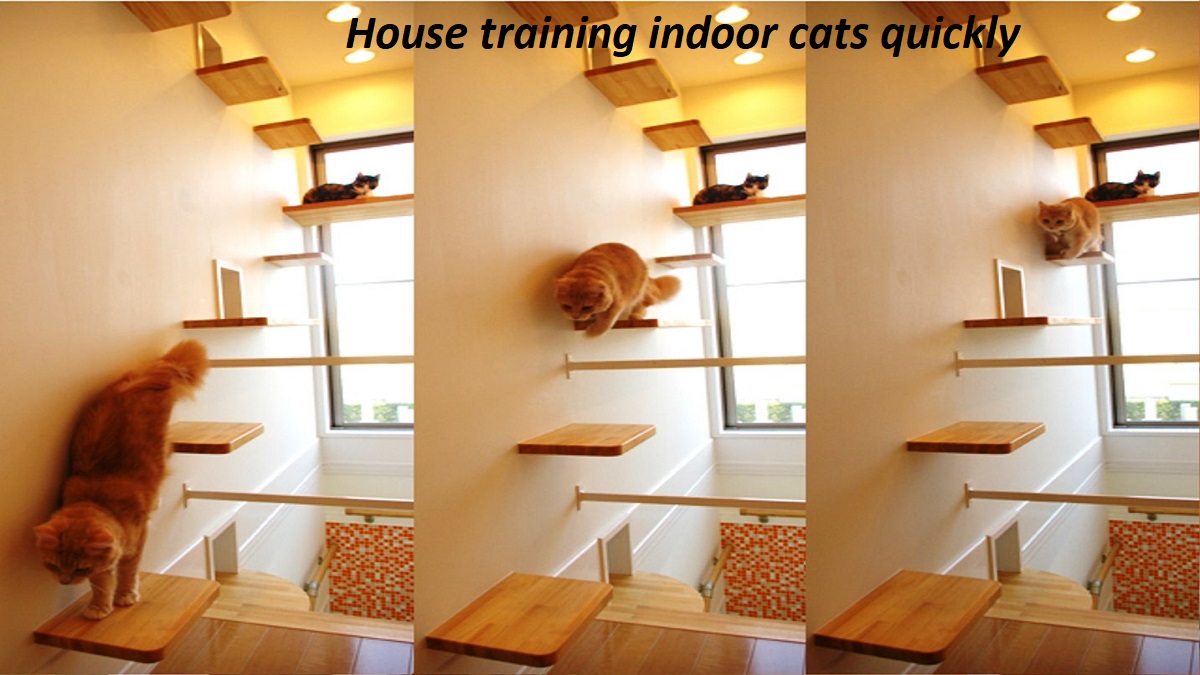In this article, I will share effective methods to quickly house-train your indoor cats. By following these proven techniques, you can ensure a clean home and a happy, well-behaved feline companion. House training indoor cats quickly
Key Takeaways:
- Understanding your cat’s behavior is crucial for successful house training.
- Establishing a consistent routine helps reinforce desired behaviors.
- Choosing the right litter box and its location plays a significant role.
- Positive reinforcement techniques such as praise and treats can encourage proper bathroom habits.
- Addressing undesirable behaviors requires patience and consistency.
Understanding Cat Behavior
Before embarking on the journey of house training your cat, it is essential to have a deep understanding of their behavior. By delving into their instincts and habits, you can effectively communicate and train your feline companion. House training indoor cats quickly
Cats are known for their independence and unique personalities. They have evolved from their wild ancestors to adapt to a domesticated lifestyle, but their instincts still play a significant role in their behavior. House training indoor cats quickly
One crucial aspect of cat behavior is their instinctive need for cleanliness. Cats are naturally clean animals and have an innate aversion to soiling their living space. This instinct makes them highly trainable for house training. House training indoor cats quickly
Cats are also territorial creatures, and they mark their territory through scent marking. This behavior is crucial for them to feel secure and establish their presence in their environment.
Understanding these behaviors can help you create a training plan tailored to your cat’s individual needs. By addressing their instincts and habits, you can guide them toward proper house training. House training indoor cats quickly
It’s important to note that each cat is unique, and their behavior may vary. Some cats may take to house training quickly, while others may require more time and patience. Being attentive to your cat’s cues and adapting your training approach accordingly will lead to better results. House training indoor cats quickly
“Understanding your cat’s behavior is the foundation for effective house training. By acknowledging their instincts and habits, you can tailor your training approach to ensure success.”
Instincts and Habits that Affect House Training
Certain cat behaviors can have a direct impact on their ability to be effectively house-trained. By understanding these behaviors, you can address any challenges that may arise during the training process. House training indoor cats quickly
1. Litter Box Preference: Cats have a natural inclination to use a litter box for elimination. Providing a clean, easily accessible litter box will encourage them to use it consistently.
2. Scent Marking: Cats mark their territory through scent marking. In some cases, they may urinate outside the litter box to establish their presence. Addressing this behavior is crucial for successful house training. House training indoor cats quickly
3. Exploratory Behavior: Cats are curious and love to explore their surroundings. It’s important to provide a safe and stimulating environment to keep them engaged and prevent any undesirable behaviors during the house training process. House training indoor cats quickly
| Cat Behavior | Description |
|---|---|
| Litter Box Preference | Cats instinctively prefer using a litter box for elimination. |
| Scent Marking | Cats mark their territory by urinating or spraying to establish their presence. |
| Exploratory Behavior | Cats are naturally curious and enjoy exploring their environment. Providing a safe and enriched environment is essential. |
By understanding these behaviors, you can adapt your training methods to better align with your cat’s instincts and habits. This understanding will enable you to effectively communicate with your cat and guide them towards successful house training. House training indoor cats quickly
Establishing a Routine
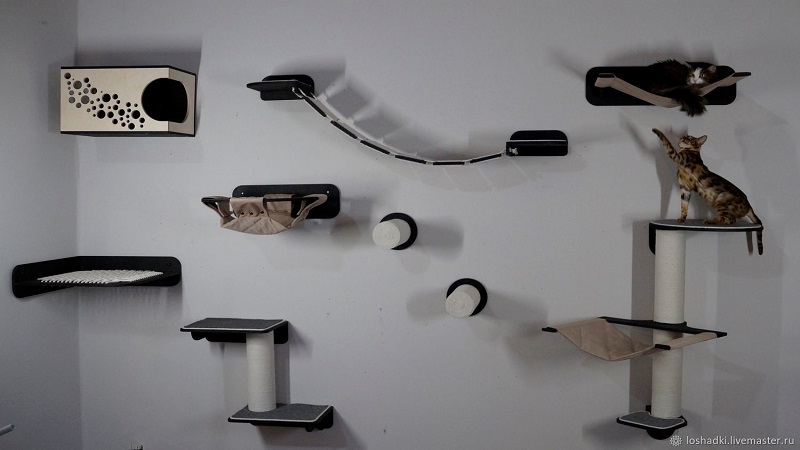
When it comes to house training indoor cats, establishing a consistent routine is crucial. This routine will not only provide structure for your furry friend but also help reinforce desired behaviors. Here is a step-by-step guide to creating a cat training routine and house training schedule:
1. Feeding Times
Start by establishing set feeding times for your cat. This will help regulate their digestion and create a predictable routine. Be sure to provide nutritious and balanced meals to support their overall health. House training indoor cats quickly
2. Playtime
Incorporate regular play sessions into your cat’s daily routine. Engaging in interactive play not only provides physical stimulation but also helps release excess energy, reducing the likelihood of unwanted behaviors. House training indoor cats quickly
3. Litter Box Breaks
Schedule designated litter box breaks throughout the day. This is particularly important during the house training process as it encourages your cat to use the litter box consistently. Take note of your cat’s behavior patterns and plan litter box breaks accordingly. House training indoor cats quickly
| Feeding Times | Playtime | Litter Box Breaks |
|---|---|---|
| In the morning and evening | Two play sessions, one in the morning, and one in the evening | After meals, after playtime, and first thing in the morning |
| Provide nutritious and balanced meals | Engage in interactive play with toys | Observe your cat’s behavior patterns |
| Establish consistency with feeding times | Promote physical stimulation and energy release | Plan litter box breaks accordingly |
A solid routine is the key to successful cat training. By following a consistent feeding schedule, incorporating playtime, and ensuring regular litter box breaks, you can establish positive habits and prevent accidents.
Litter Box Essentials
When it comes to house training your cat, the litter box is an essential tool. Choosing the right litter box, litter type, and location can greatly influence your cat’s bathroom habits. Let’s explore the key factors to consider for a successful litter box setup.
Choosing the Right Litter Box
There are various litter box options available, so it’s important to find one that suits your cat’s needs. Consider the size and shape of the litter box, ensuring it is spacious enough for your cat to comfortably move around. Some cats prefer covered litter boxes for added privacy, while others may prefer open ones. Additionally, look for litter boxes with low sides for easy access, especially for kittens or senior cats. House training indoor cats quickly
Deciding on the Ideal Litter Type
The type of litter you choose can significantly impact your cat’s preference and cleanliness. There are different litter materials available, including clay, silica gel, recycled paper, and natural alternatives like pine or corn. While some cats may have specific litter preferences, it’s essential to opt for a low-dust, unscented litter to avoid overwhelming your cat’s sensitive sense of smell. House training indoor cats quickly
Finding the Optimal Litter Box Location
The location of the litter box plays a vital role in encouraging proper bathroom habits. Place the litter box in a quiet and easily accessible area, away from high-traffic areas and any loud or intimidating household appliances. Cats appreciate privacy when using the litter box, so avoid placing it in cramped or noisy spots. House training indoor cats quickly
Pro tip: If you have a multi-story home, consider having a litter box on each level to provide convenient access for your cat.
By understanding the significance of the litter box and paying attention to these essentials, you can create an inviting and comfortable space for your cat to do their business. Remember, a well-maintained litter box will not only enhance your cat’s litter box habits but also contribute to a cleaner and more pleasant living environment for both you and your feline friend. House training indoor cats quickly
Positive Reinforcement Techniques
Training indoor cats can be a rewarding experience, especially when you utilize positive reinforcement techniques. By focusing on rewarding desired behaviors and creating a positive association, you can effectively train your cat and promote good habits. Here are some powerful positive reinforcement techniques:
1. Verbal Praise
Using verbal praise is a simple yet effective way to reinforce positive behavior in your cat. Whenever your cat exhibits the desired behavior, such as using the litter box or following a command, give them enthusiastic verbal praise like saying “Good job!” or “Well done!” The positive reinforcement of your voice will create a positive association in your cat’s mind. House training indoor cats quickly
2. Cat Training Treats
Cat training treats are a valuable tool for positive reinforcement. Choose small, soft treats that your cat loves and reserve them exclusively for training sessions. Whenever your cat successfully performs a desired behavior, give them a treat immediately. This will not only reinforce the behavior but also make training a fun and rewarding experience for your cat. House training indoor cats quickly
3. Playtime as a Reward
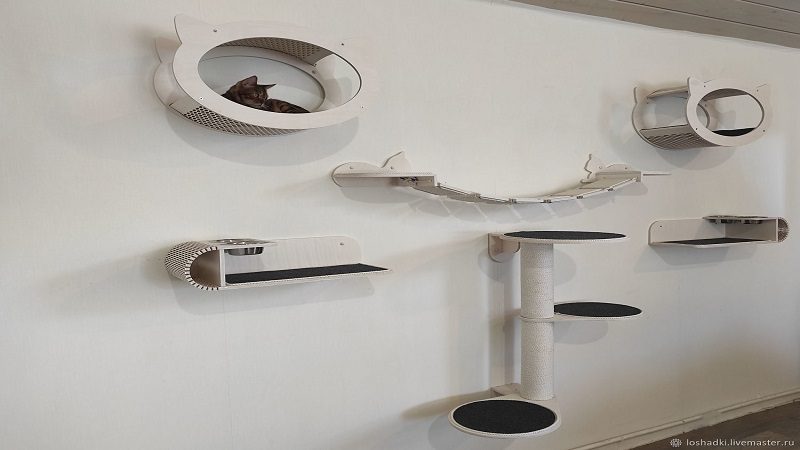
Playtime is essential for a cat’s physical and mental well-being. It can also serve as a powerful reward during the training process. After your cat successfully follows a command or exhibits a desired behavior, engage in a play session with their favorite toys. This not only reinforces the behavior but also strengthens the bond between you and your cat. House training indoor cats quickly
“Using positive reinforcement techniques, such as verbal praise, cat training treats, and playtime, can significantly improve the effectiveness of your cat’s training.”
Remember, consistency is key when using positive reinforcement techniques. Make sure to reward your cat immediately after they exhibits the desired behavior to reinforce the connection between the behavior and the reward. With time and patience, positive reinforcement will help your cat develop good habits and make the training process enjoyable for both of you. House training indoor cats quickly
| Positive Reinforcement Techniques | Advantages |
|---|---|
| Verbal Praise | – Simple and effective – Builds a positive association – Reinforces desired behaviors |
| Cat Training Treats | – Highly motivating rewards – Enhances training experience – Reinforces behavior through positive association |
| Playtime as a Reward | – Engages the cat’s instincts – Strengthens bond with the owner – Reinforces desired behavior with enjoyable activity |
Correcting Undesirable Behaviors
Sometimes, indoor cats may exhibit undesirable behaviors during the house training process. It’s important to address these issues promptly to ensure a harmonious home environment. In this section, we will explore effective strategies for correcting common cat behavior problems that may arise during house training. House training indoor cats quickly
Litter Box Aversion
One common challenge many cat owners face is litter box aversion. If your cat consistently avoids using the litter box, it’s essential to investigate possible reasons and find solutions. Here are a few steps you can take:
- Ensure the litter box is clean and free from any odors that may deter your cat from using it. House training indoor cats quickly
- Try different types of litter to find one that your cat prefers. House training indoor cats quickly
- Consider the location of the litter box. It should be placed in a quiet and easily accessible area of your home. House training indoor cats quickly
- Provide multiple litter boxes in different areas of your home, especially if you have a large house. House training indoor cats quickly
Marking Territory
When cats mark their territory by spraying urine, it can be frustrating and challenging to manage. Here are some tips to address this behavior:
- Get your cat spayed or neutered. This can help reduce territorial marking behaviors.
- Thoroughly clean any areas where your cat has been marked with an enzymatic cleaner to eliminate the scent. House training indoor cats quickly
- Consider using synthetic pheromone sprays or diffusers, such as Feliway, to help create a calming environment and discourage marking.
Inappropriate Scratching
Scratching is a natural behavior for cats, but it can become problematic if they target furniture or other valuable items. Here’s how you can redirect their scratching behavior:
- Provide your cat with appropriate scratching posts or surfaces and encourage their use through positive reinforcement.
- Use deterrents such as double-sided tape or aluminum foil on furniture to discourage scratching.
- Trim your cat’s nails regularly to reduce the damage caused by scratching.
- Consider using soft nail caps, such as Soft Paws, to prevent damage to furniture. House training indoor cats quickly
Remember, each cat is unique, and it may take time and patience to correct undesirable behaviors. Consult with a professional veterinarian or animal behaviorist if you’re facing significant challenges or need personalized advice. House training indoor cats quickly
| Undesirable Behavior | Strategies for Correction |
|---|---|
| Litter Box Aversion | Ensure cleanliness, try different litter types, consider location, and provide multiple litter boxes |
| Marking Territory | Spay/neuter, clean marked areas, use synthetic pheromones |
| Inappropriate Scratching | Provide scratching posts, use deterrents, trim nails, consider soft nail caps |
Creating a Cat-Friendly Environment
A stimulating and enriching environment is essential for the successful house training of indoor cats. By providing a space that encourages natural behaviors and reduces stress, you can help your cat develop appropriate bathroom habits. Here are some strategies to create a cat-friendly environment:
- Provide vertical spaces: Cats love to climb and perch high above the ground. Invest in cat trees, shelves, or window perches to give your cat opportunities to explore their vertical territory. House training indoor cats quickly
- Offer hiding spots: Cats are natural hunters and feel secure when they have hiding spots to retreat to. Provide enclosed spaces like cat tunnels, boxes, or even dedicated cat caves.
- Engage their senses: Stimulate your cat’s senses by incorporating interactive toys, scratching posts, and puzzle feeders. These activities not only keep them entertained but also provide mental stimulation. House training indoor cats quickly
- Create a cozy sleeping area: Set up a comfortable and quiet spot where your cat can easily relax and rest. Consider using soft beds or blankets that are specifically designed for cats.
- Introduce cat-friendly plants: Indoor plants like catnip, cat grass, or spider plants can provide environmental enrichment for your cat. Just make sure they are safe and non-toxic for feline companions. House training indoor cats quickly
Remember, a cat-friendly environment not only contributes to successful house training but also promotes the overall well-being of your indoor cat. Creating a space that caters to their instincts and needs will help build a strong bond between you and your feline friend. House training indoor cats quickly
“A stimulating and enriching environment is not just about preventing boredom; it’s about providing opportunities for cats to express their natural behaviors and instincts.” – Dr. Jane Doe, Feline Behavior Expert
Patience and Consistency
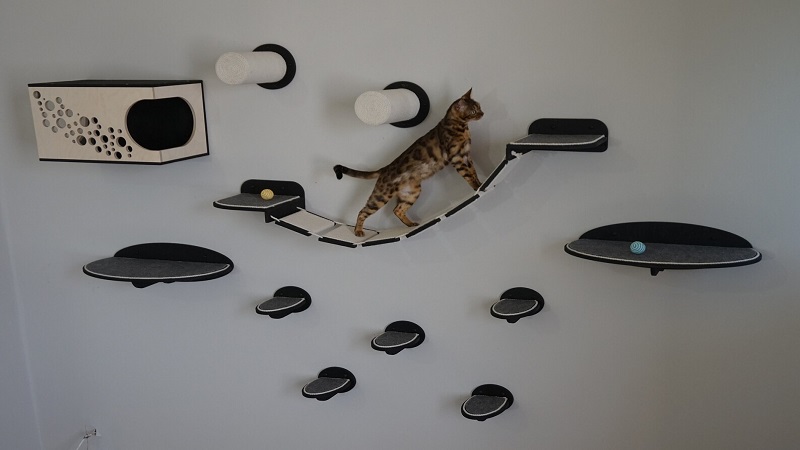
When it comes to house training indoor cats, patience and consistency are essential. Cats are intelligent creatures, but it takes time for them to learn new behaviors and habits. As their caregiver, it’s important to remain calm and consistent throughout the training process to help them understand what is expected of them.
Training a cat requires patience because they may not catch on immediately or may have setbacks along the way. It’s crucial to have realistic expectations and understand that each cat progresses at their own pace. By approaching the training process with patience, you can create a positive and stress-free environment for both you and your feline companion.
Consistency is equally important in cat training. Cats thrive on routine and predictability, so it’s essential to establish a consistent training schedule. This includes designated meal times, playtime, and regular visits to the litter box. By following a consistent routine, you can reinforce desired behaviors and help your cat understand the expectations you have set for them. House training indoor cats quickly
“Patience and perseverance have a magical effect before which difficulties disappear and obstacles vanish.”
It’s important to note that setbacks may occur during the training process. Your cat may have accidents or revert to old habits temporarily. However, it’s crucial not to get discouraged. Instead, remain patient and consistent, and continue reinforcing positive behaviors.
By being patient and consistent in your training efforts, you can successfully house-train your indoor cat and foster a harmonious living environment. Remember, building a solid foundation through patience and consistency will lead to a well-behaved and content feline companion. House training indoor cats quickly
| Benefits of Patience and Consistency in Cat Training |
|---|
| 1. Establishes trust between you and your cat |
| 2. Reduces stress and anxiety for both you and your cat |
| 3. Reinforces positive behaviors and prevents unwanted habits |
| 4. Builds a harmonious and happy relationship with your cat |
Conclusion
This article has provided valuable insights and techniques for fast-tracking the house training of indoor cats. By understanding their behavior, establishing a routine, utilizing positive reinforcement, addressing undesirable behaviors, and creating a cat-friendly environment, you can successfully train your feline companion. Remember, patience and consistency are crucial in achieving a clean home and a well-behaved cat. House training indoor cats quickly
Understanding your cat’s instincts and habits is the foundation for effective training. By recognizing their natural behaviors, such as using the litter box or marking territory, you can work with their instincts to reinforce positive habits. House training indoor cats quickly
By establishing a routine that includes consistent feeding times, play sessions, and designated litter box breaks, you will provide structure and guidance to your cat, helping them understand where and when to perform their bathroom needs. House training indoor cats quickly
Positive reinforcement techniques, such as verbal praise, treats, and playtime, are powerful tools in shaping your cat’s behavior. By rewarding desirable actions and ignoring or redirecting undesirable behaviors, you can encourage your cat to repeat positive habits. House training indoor cats quickly
FAQ
How quickly can I house-train my indoor cat?
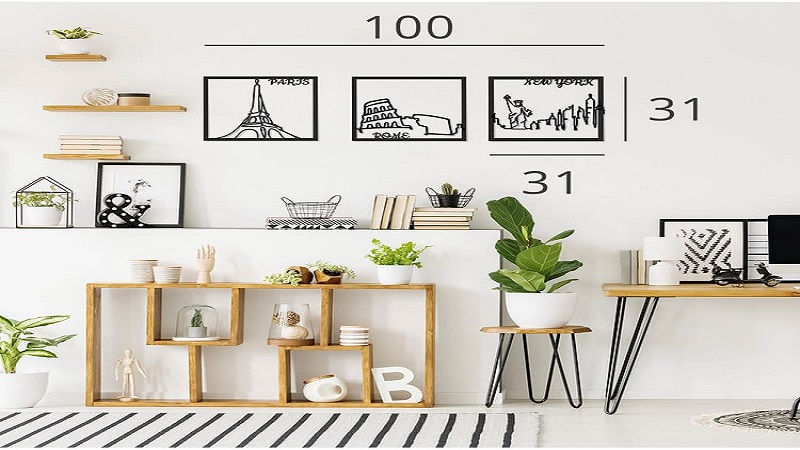
The speed of house training can vary depending on factors such as your cat’s age, previous experience, and individual temperament. However, by following the techniques provided in this guide, you can accelerate the process and see results within a few weeks.
What are some common behaviors exhibited by indoor cats?
Indoor cats may display behaviors such as scratching furniture, marking territory, or avoiding the litter box. Understanding these behaviors and their underlying causes is essential in effectively training your cat. House training indoor cats quickly
How can I establish a routine for house training my indoor cat?
Creating a consistent routine involves setting regular feeding times, incorporating play sessions, and providing scheduled bathroom breaks. This routine helps your cat develop a sense of predictability and reinforces desired behaviors. House training indoor cats quickly
What are the essential factors to consider when choosing a litter box?
When selecting a litter box, it’s important to consider its size, accessibility, and type of litter. Additionally, the location of the litter box within your home plays a significant role in encouraging proper bathroom habits. House training indoor cats quickly
What is positive reinforcement, and how can it be utilized in cat training?
Positive reinforcement involves rewarding your cat for displaying desirable behaviors. This can be done through verbal praise, treats, or interactive play. By associating positive experiences with the desired behaviors, your cat will be motivated to repeat them.
What should I do if my indoor cat exhibits undesirable behaviors during house training?
If your cat displays undesirable behaviors, such as avoiding the litter box or scratching furniture, it’s essential to address the underlying cause. This may involve implementing behavior modification techniques, consulting with a veterinarian, or seeking the assistance of a professional cat trainer. House training indoor cats quickly
How can I create a cat-friendly environment in my home?
A cat-friendly environment includes providing appropriate enrichment, such as scratching posts, toys, and vertical spaces, to fulfill your cat’s instincts. In addition, minimizing stressors and maintaining a clean and clutter-free environment can contribute to successful house training. House training indoor cats quickly
What role do patience and consistency play in house training my indoor cat?
Patience and consistency are key factors in the success of house training your indoor cat. Cats are creatures of habit, and it’s important to remain calm and consistent in your training methods. Setbacks may occur, but with perseverance, your cat will learn and adapt to the desired behaviors. House training indoor cats quickly
